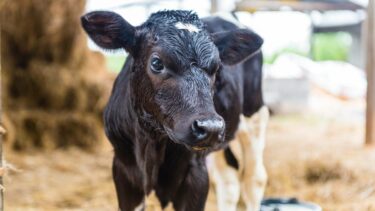The 3 Qs of efficient colostrum management
The feeding of colostrum to calves is a much-discussed topic. Rightfully so, because it has a significant impact on the early development of a calf’s gut, immune system, health, growth, and future production potential. Colostrum is rich in the immunoglobulins (IgG) needed to build calves’ immunity, and it has a high nutritional value beyond energy and protein. By feeding calves with the appropriate volumes of high-quality colostrum in early life, the calves receive a head start in health and development. Let’s discuss 3 vital steps to optimizing your colostrum management: Quick, Quality, and Quantity, the 3 Qs.
Q1: Quick harvesting & timely feeding
Calves rely solely on colostrum for early immunity, as they lack the transfer of antibodies from the mother during pregnancy. The window for effective IgG absorption is short, diminishing significantly within six hours after birth (see Figure 1). Therefore, prompt feeding of colostrum after birth is essential to ensuring the development of calf immunity.

Quick colostrum harvesting
To prevent contamination, cleanly and hygienically collect the first colostrum directly after calving. Contaminated colostrum will be less effective in transferring IgG and will quickly go to waste.
- Colostrum to be used within the next 24 hours can be stored in a refrigerator. Extra colostrum to be used after 24 hours, once tested for good quality, can be stored frozen. By freezing colostrum with a high IgG count, a colostrum stock can be built for use in case the dam does not provide enough high-quality colostrum.
- Freeze excess colostrum as soon as possible in small portions of about 0.5–1 liter, and mark each portion with the cow number, date, and IgG test value. Smaller volumes are easier and quicker to thaw. Thaw frozen colostrum in a hot water bath with a water temperature of 50°C. Thawing at too high a temperature (>60°C) will damage the protein and the IgG in the colostrum.
Q2: Quality of the colostrum
Colostrum IgG quality varies, with the highest concentration found in the first milkings post-calving. The level of immunoglobulin is lower in every subsequent milking (Figure 2).

Figure 2: Evolution of the IgG concentrations from the first 16 milkings following calving (Levieux and Ollier, 1999).
Dry cow nutrition
Indirectly, the nutrition of the dam influences colostrum quality, with high milk production diluting IgG content. Interestingly, if high milk production occurs directly after calving, the IgG content will be diluted and the concentration level of IgG in the first milked colostrum will be lower. Moreover, we see that the general level of IgG in colostrum does increase with the age of the dam (Table 1).
| Calving number | % IG |
| First | 5.9 |
| Second | 6.3 |
| Third | 8.2 |
| Fourth and later | 7.5 |
Testing for quality
Testing colostrum quality is essential to ensure that the calf receives enough immunoglobulins. Use a colostrometer or Brix-refractometer to assess IgG levels. Ideally, the first colostrum should have IgG levels of at least 50 g/liter. Low IgG levels in colostrum can lead to a weak immune system in calves. Regularly checking colostrum quality before feeding is fundamental to effective colostrum management.
Q3: Quantity of the colostrum intake
The amount of colostrum necessary to build the calf’s immunity depends on the quality of the colostrum, the absorption of IgG by the calf, and the time of feeding after birth. This brings us to the third 3Q rule for proper colostrum feeding: Quantity. For strong immunity, a calf needs a blood serum IgG level of >10 g/liter. To achieve this number, the calf needs to be fed a minimum of 150 g of IgG during the first 6 hours of life.
In practice
In practice, providing 2 liters within the first hour and an additional 2 liters within six hours is crucial to colostrum feeding. Alternatively, feeding 4 liters using a teat bottle initially can streamline the process.
- If the calf doesn’t consume the full volume, residual colostrum can be administered via an esophageal tube.
- Another option is ad lib feeding with a teat bucket, ensuring consumption of at least 4 liters within the first 6 hours. The focus should be on quality, quantity, and timing.
- After the initial feeding, it is important to decide when to transition to milk replacer or to continue colostrum feeding for 2-3 days. Prolonged colostrum feeding offers benefits beyond 24 hours, supporting intestinal development with additional nutrients present in colostrum and transition milk.
Conclusion: the key to calf health and growth
To summarize, colostrum management is the start of every healthy and efficient calf-rearing system. Abiding by the 3 Qs – quick and hygienic collection, testing for quality, and ensuring quantity needs are met – gives calves a healthy start. When successfully executed, this time and effort will translate into fewer health issues later in life and be evidenced in faster and more efficient growth during the rearing period.
To gain a clear picture of the success of your colostrum routines, you can check the IgG level in the calves’ blood. Doing this at the age of 1-2 days will give you a clear picture concerning the amount of IgG you have been able to transfer to the calf via your colostrum management and colostrum feeding system.
This contact was suggested based on the location you are browsing from. You can of course also consult our other contacts and locations here.

